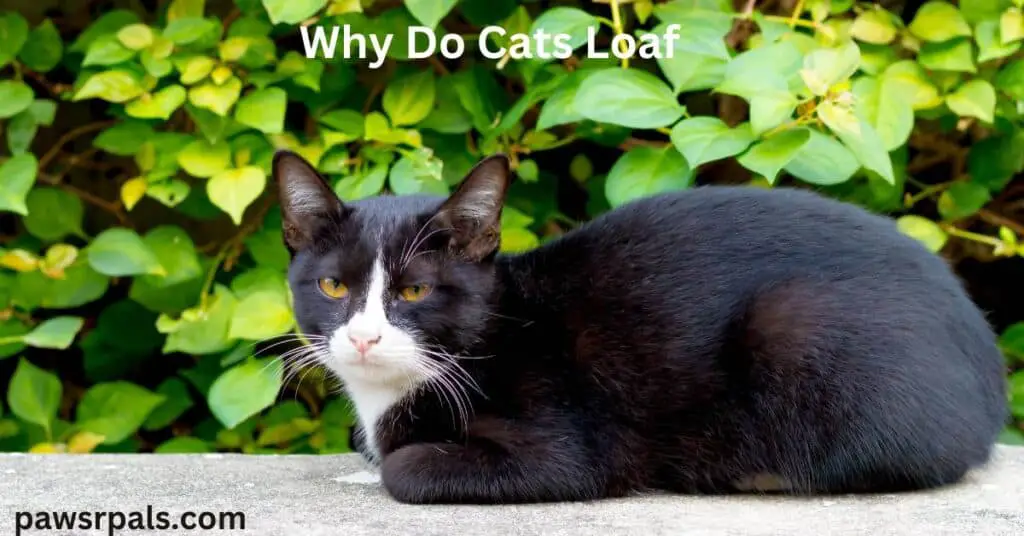If you own a cat, know someone who owns a cat, or follow any of the gazillion cat influencers on Instagram, you’ll know how to spot a 10/10 loaf. Tail tucked underneath, paws tucked underneath, body rounded, these are the signs of a perfect loaf. But what does it mean?

Cats loaf for a variety of reasons. Most of the time, it’s because they feel happy, calm, and at ease. A cat will assume a loaf position when it is drowsy but not sleepy, relaxed but attentive, comfortable but aware of its surroundings. If it’s cold, your cat might be conserving body heat. On the other hand, if a cat is loafing all day, it may have a paw injury.
Read on to learn more about the slight differences in loaf body language and what the various loaf positions mean.
5 Reasons Cats Loaf
An animal’s body language tells you much about their feelings. So, why do cats loaf? There can be many reasons why cats sit in this position.
1. Relaxed but Attentive
The most likely reason your cat sits in a loaf position is that they’re relaxed but attentive. If your cat is in the room, perched on your bed or table, with their limbs tucked, they’re relaxed and comfortable. Your pet doesn’t feel threatened and isn’t preparing to pounce or run away. In this compact, bread loaf position, your potato cat will likely enjoy your company.
While lying on their back or side shows complete vulnerability, loafing is a sign of trust and respect. Cats loaf when drowsy and resting but still want to retain awareness of their surroundings. Your pet may have closed eyes but aren’t in a deep sleep. They’re probably keeping a close eye on you. So take your cat’s behavior as a compliment and enjoy the quality time!
2. Cold and Retaining Heat
Another reason for cat loafing is the weather. If your pet feels cold, it may assume the compact loaf position to retain heat and stay warm. This is an evolutionary lesson cats have learned in the outdoors. With all of its extremities tucked close to its body, your cat keeps its limbs warm. Huddling saves body heat. Plus, when your cat is sitting like a loaf, it saves energy for later use.
3. Calm and Comfortable
The cat loaf position seems like a lot of work, but it’s really comfortable for your pet. When your cat tucks its limbs, it takes the weight off its paws and legs. After a long day of playing and jumping around, your cat may want to be calm and comfortable. So if you notice your cat loafing in your vicinity with its eyes half closed, let it rest in peace.
4. Ready to Pounce
Cat body language tells you exactly what your pet is thinking and feeling. If you have a cat sitting in an inclined loaf position, with its head low to the ground and its butt high and wiggling, your cat is getting ready to pounce. What’s the target? It could be anything from a shadow to a piece of string. For the most part, it’s pretty harmless.
5. Experiencing Pain
In rare cases, cats loaf when they’re experiencing pain. If your cat is loafing for most of the day, it may be trying to keep the weight off its paws. Of course, this will accompany other signs like extreme lethargy, a lack of appetite, litter box issues, or recent behavior change. If you suspect your cat may have an injury, take them to the vet immediately!
Types of Cat Loafs
Now you know why cats loaf; it’s time to explore the nuances in your pet’s body language. Not all loafs are the same. The slight variations in posture can help you understand your pet’s behavior.
Partial Loaf position
A 10/10 loaf of bread means zero paws or tail visibility. But if you can see the sides of your feline’s paws sticking out untucked claws or a loose tail, that’s a partial loaf position.
Sphynx Loaf position
This is when your cat assumes the loaf position but stretches out its front paws. You can spot this majestic pose if you’ve ever seen a picture of the Egyptian Sphynx.
Meatloaf Position
A meatloaf curves at both ends. You’ll see this loaf when your cat’s head is bent forward and is close to the ground. This is a cat loaf meaning drowsiness. Your pet is a step away from sleep.
Attack Loaf Position
Paws flat and stretch, head low to the ground, eyes unblinking, butt in the air and wiggling – you have the attack loaf. Your cat is getting ready to pounce!
Bread Loaf Position
A bread loaf is when your cat has all its paws beneath its body. Your cat is crouching low to the ground; its rounded body almost looks like it’s levitating above its tiny paws.
Final Word on Cat Loafs
At the end of the day, loafing means your cat feels safe. Think about it from the perspective of an apex predator. With all its paws and tail tucked close to its body, your pet doesn’t need to run away from anything in its environment. It also can’t unsheath its claws and attack in a hurry. This means your pet has chosen to assume a vulnerable position.
When a cat loafs, it feels safe, relaxed, and comfortable. Unless a loaf is accompanied by symptoms like vomiting, behavior changes, litter problems, lethargy, or yowling, there is little to suggest that your cat is dealing with an illness or injury.
So don’t worry. Be grateful for the trust your cat has shown you, and reward it with some treats for being super cute!
Before you go, here are some more articles you might find helpful:

Leave a Reply